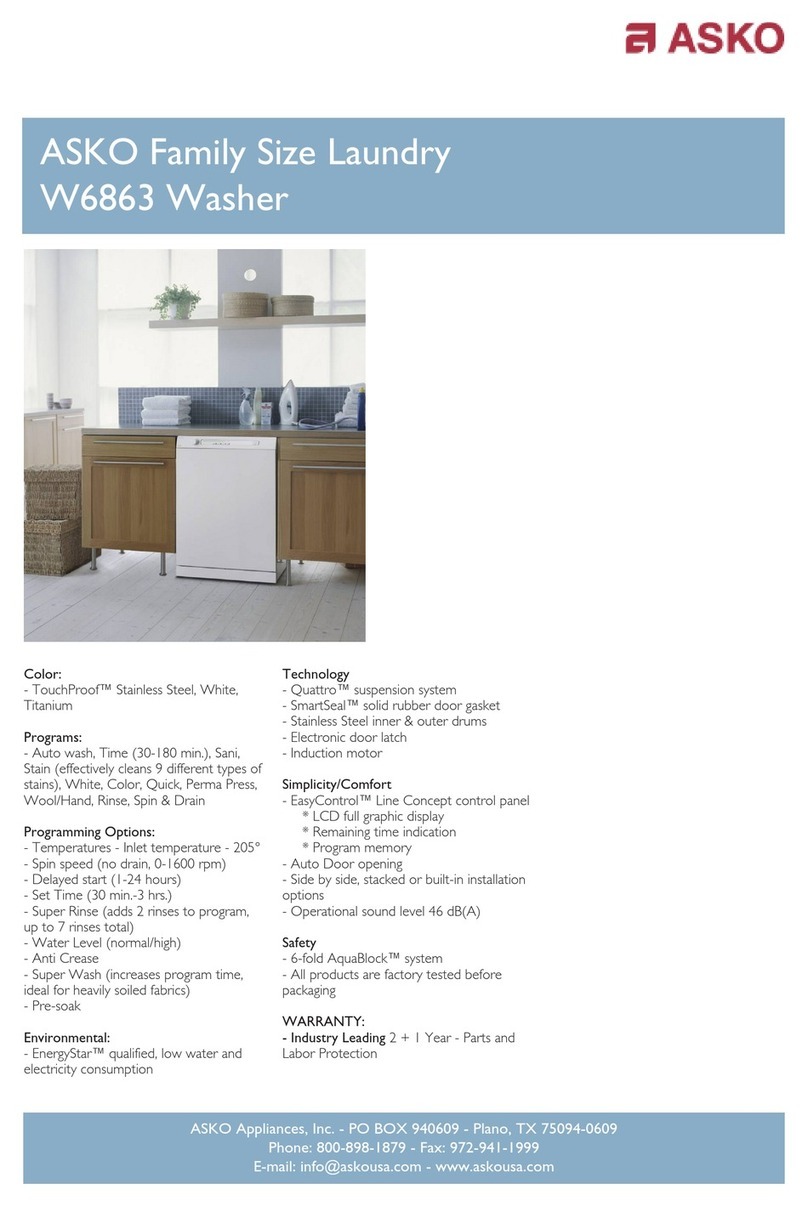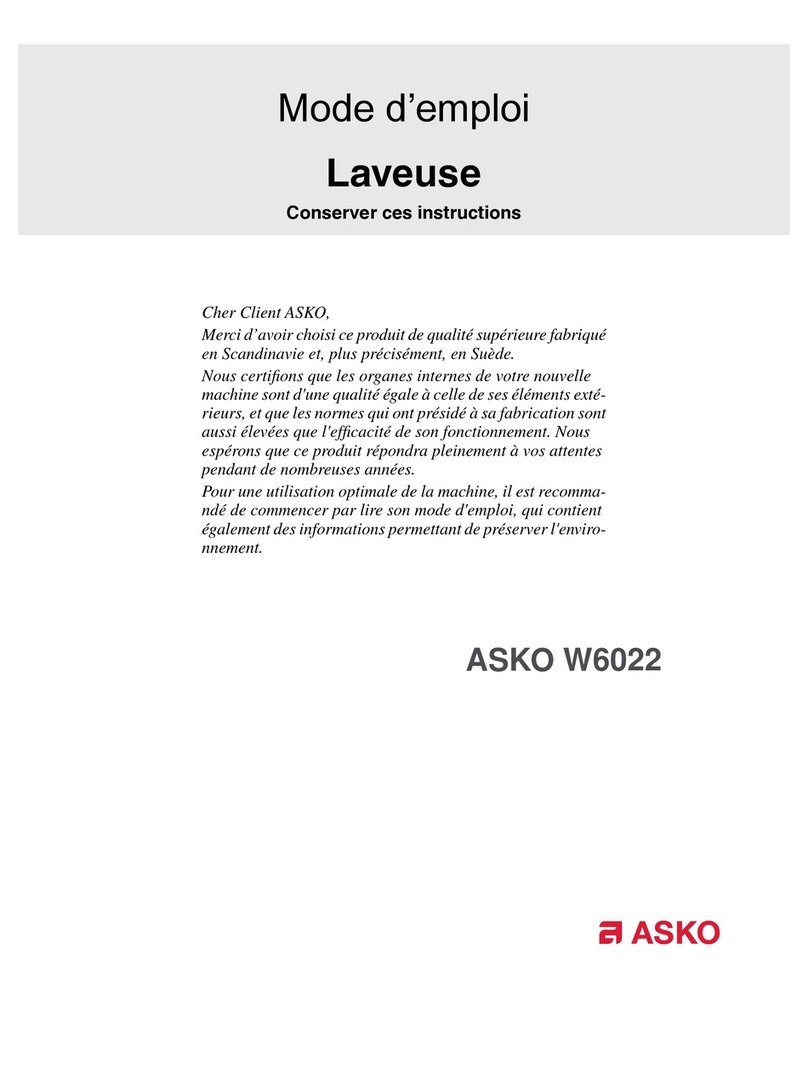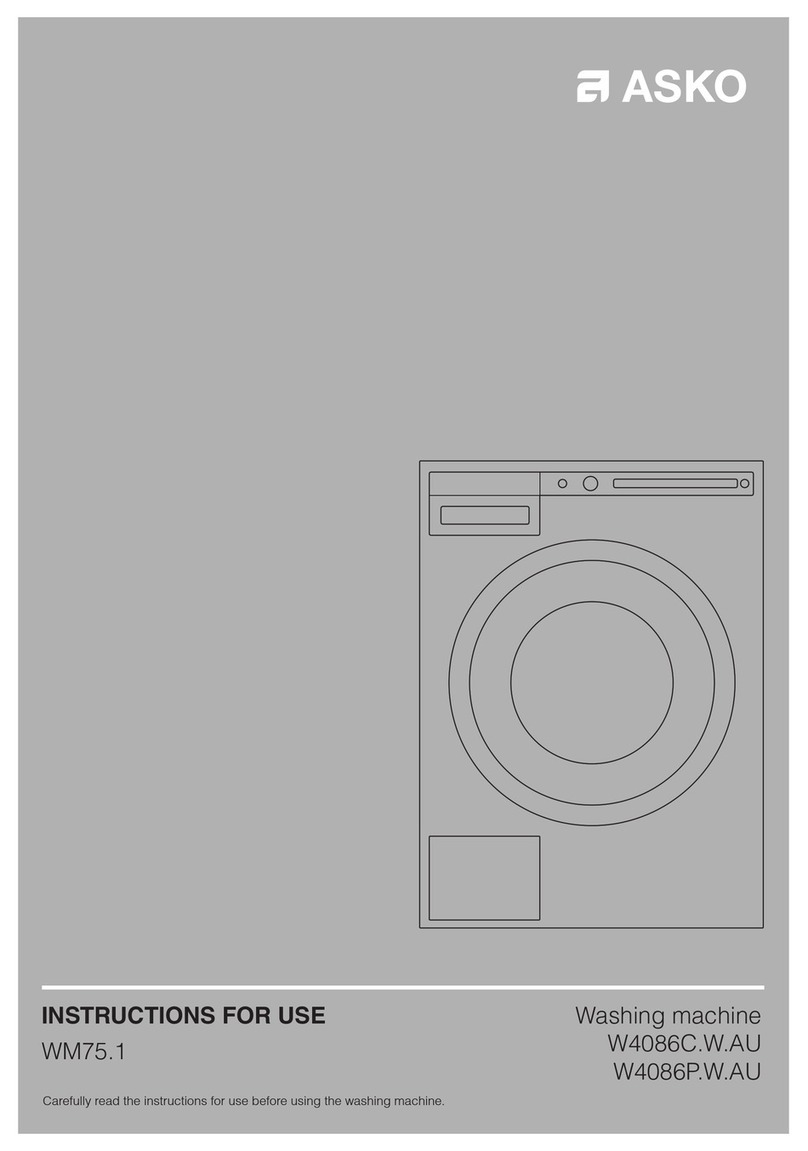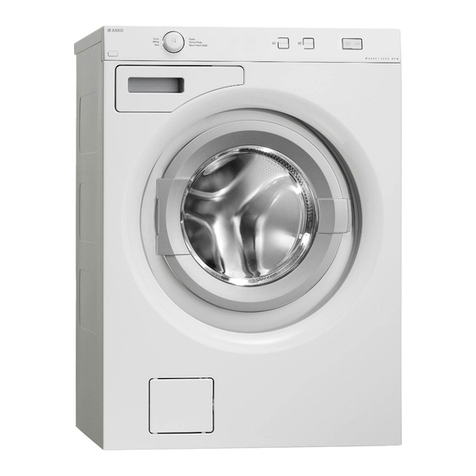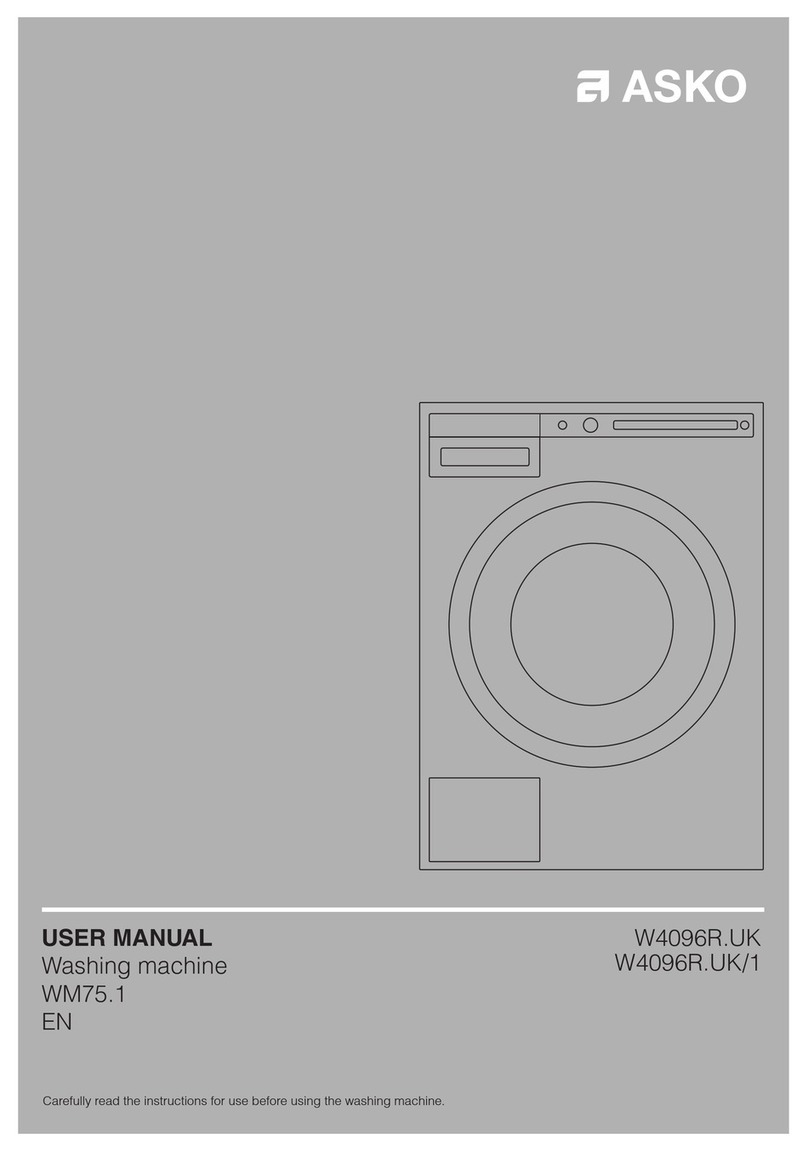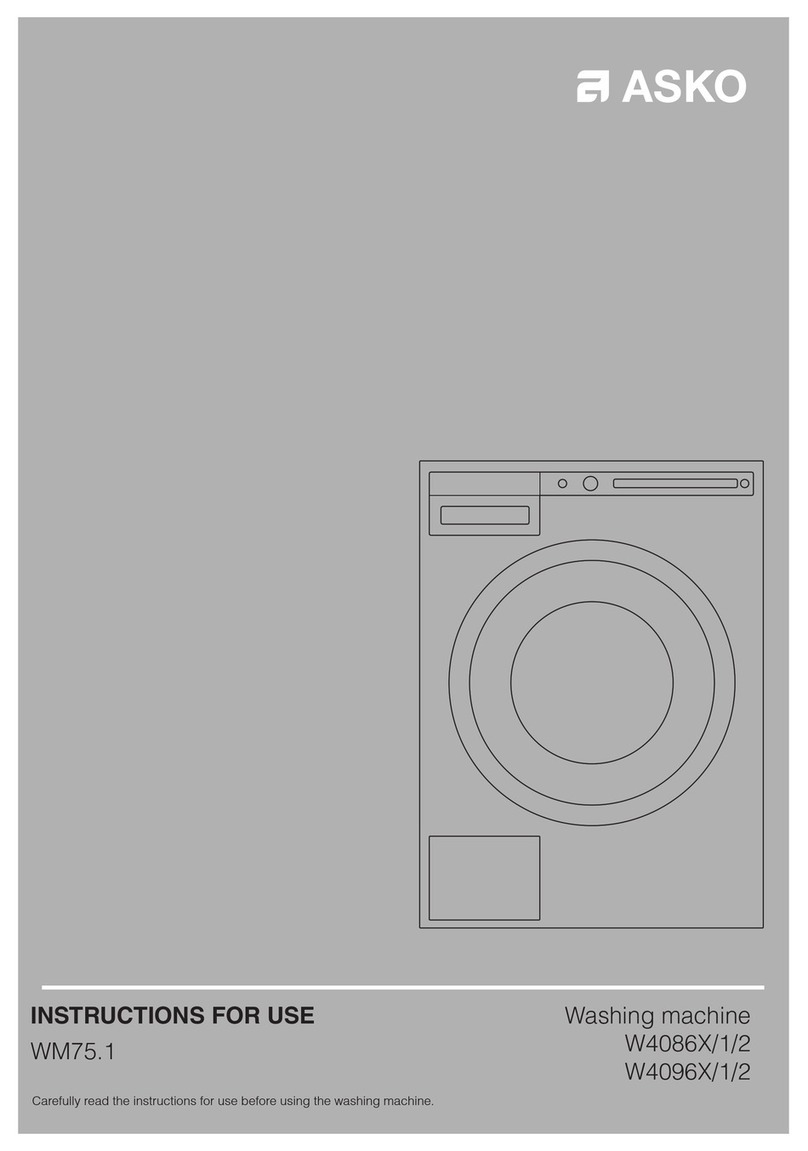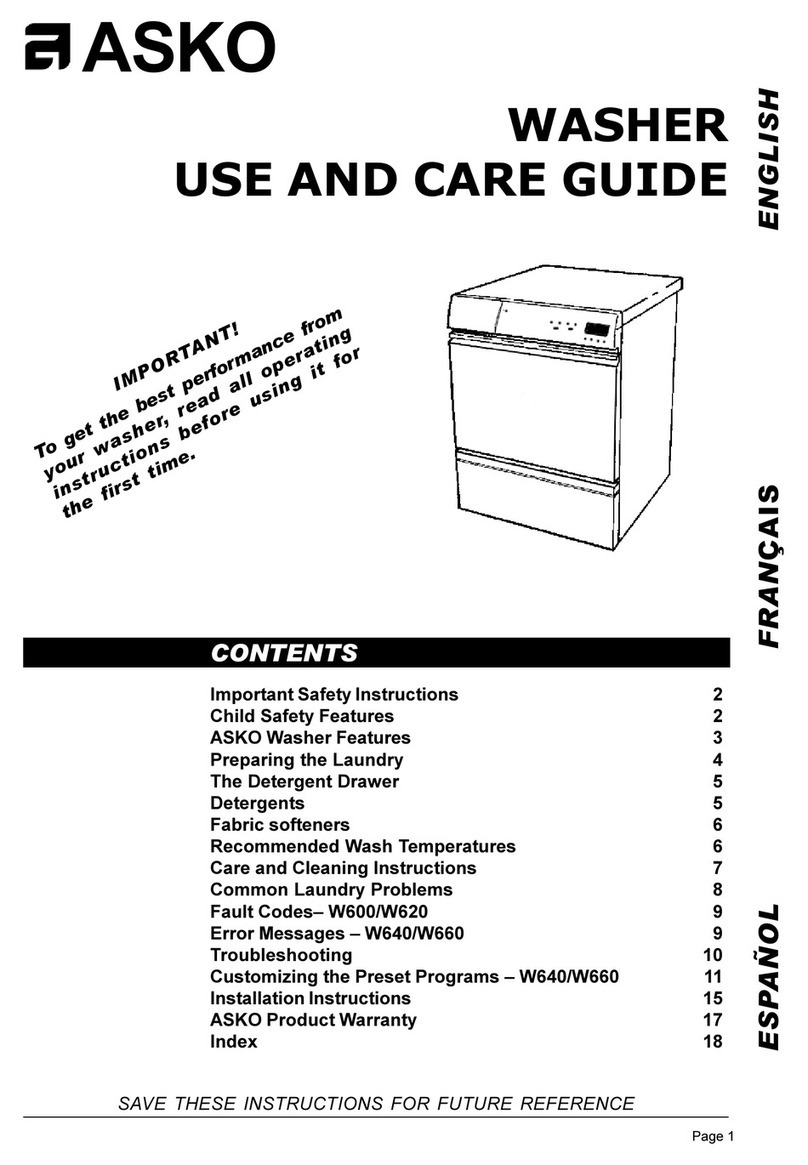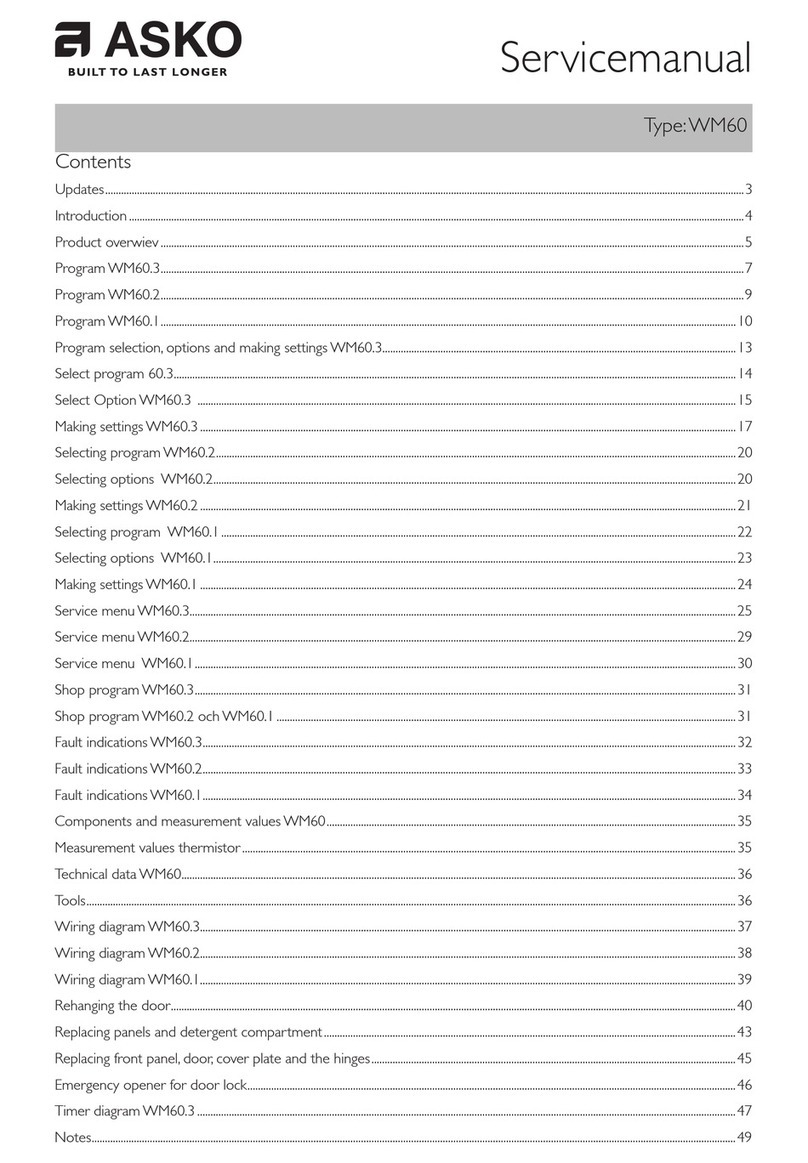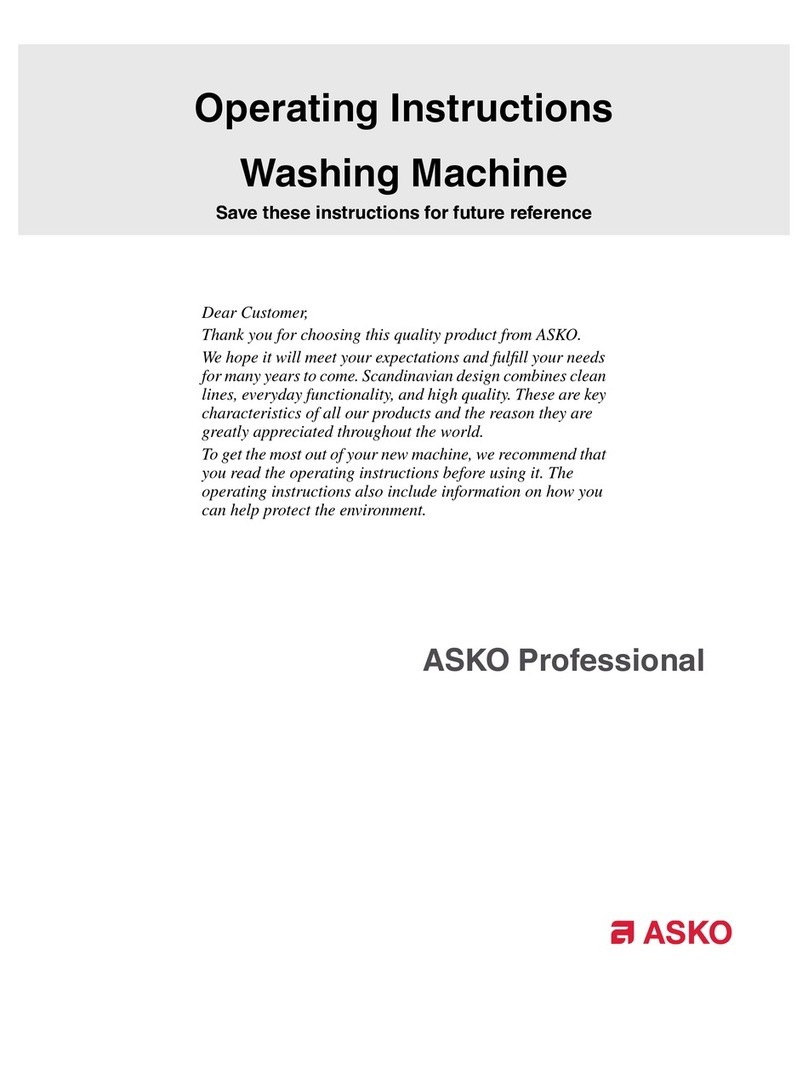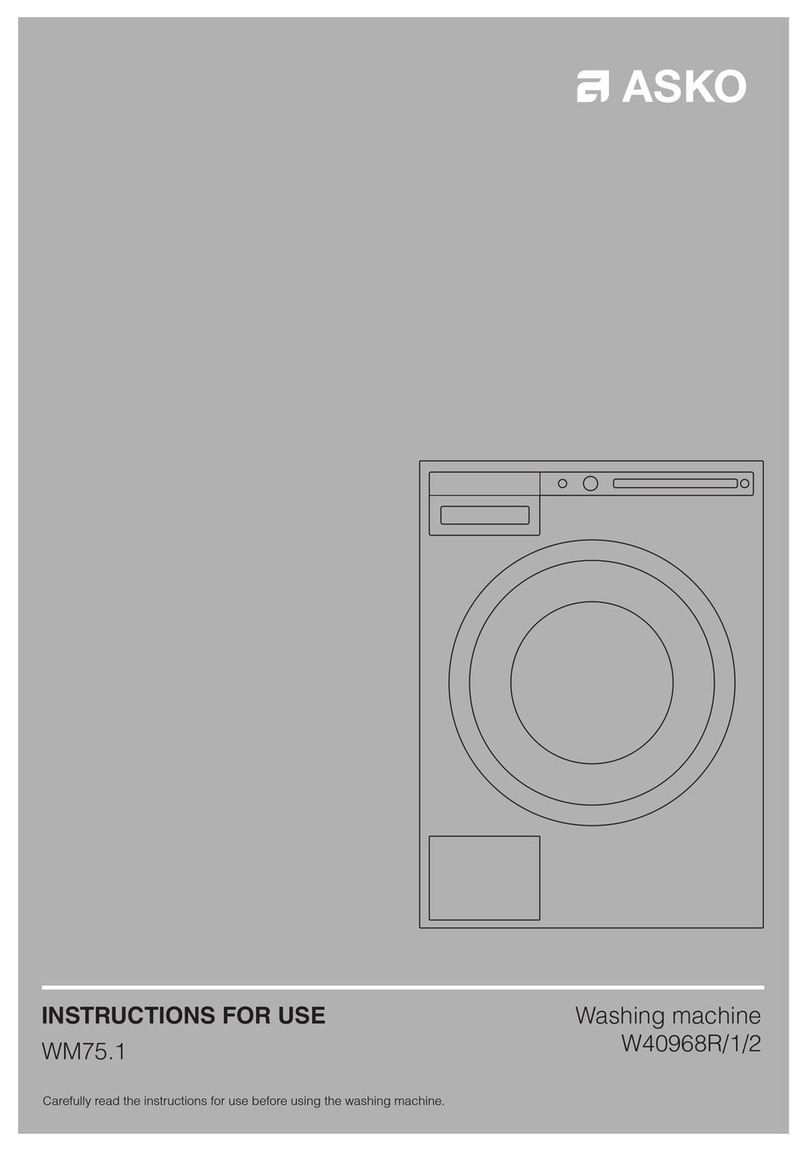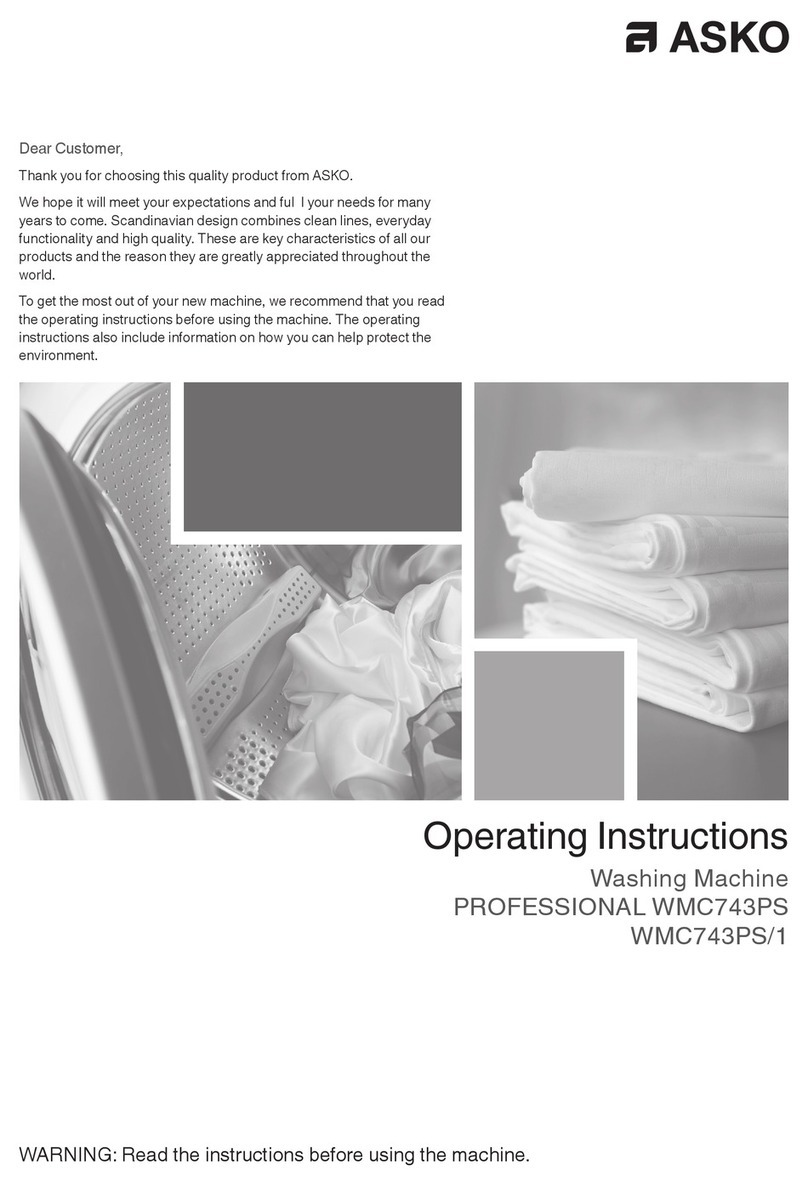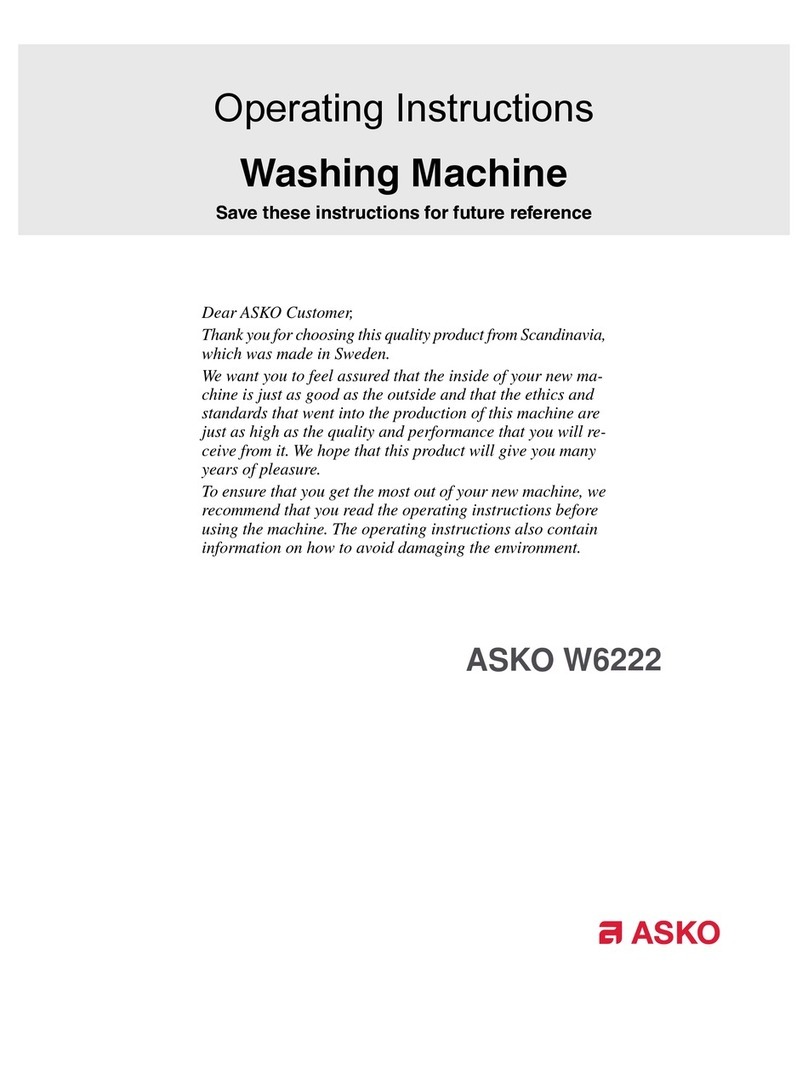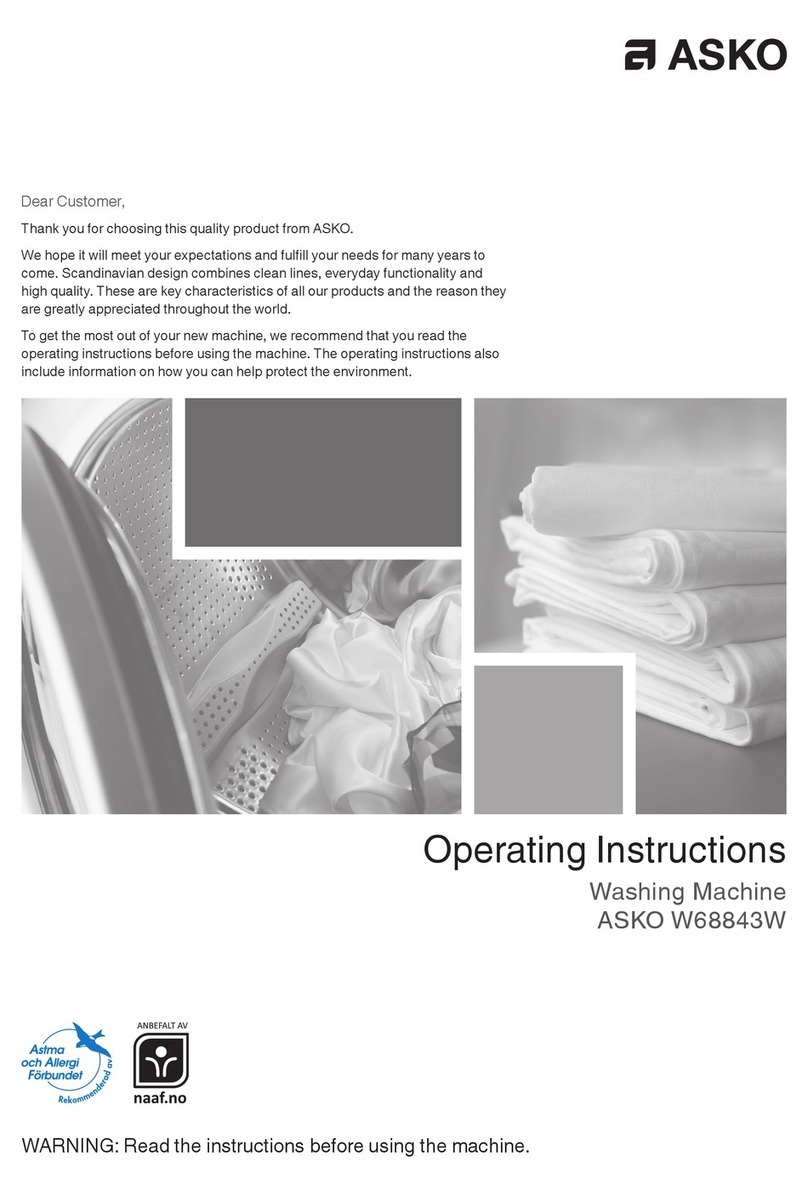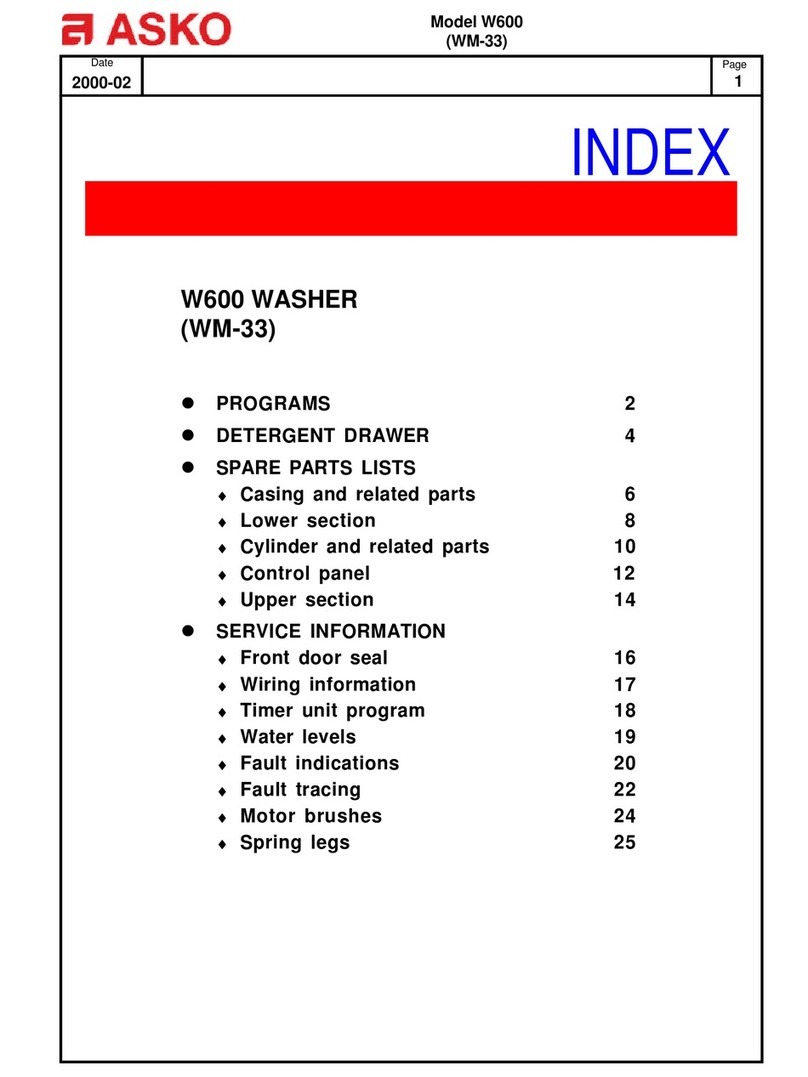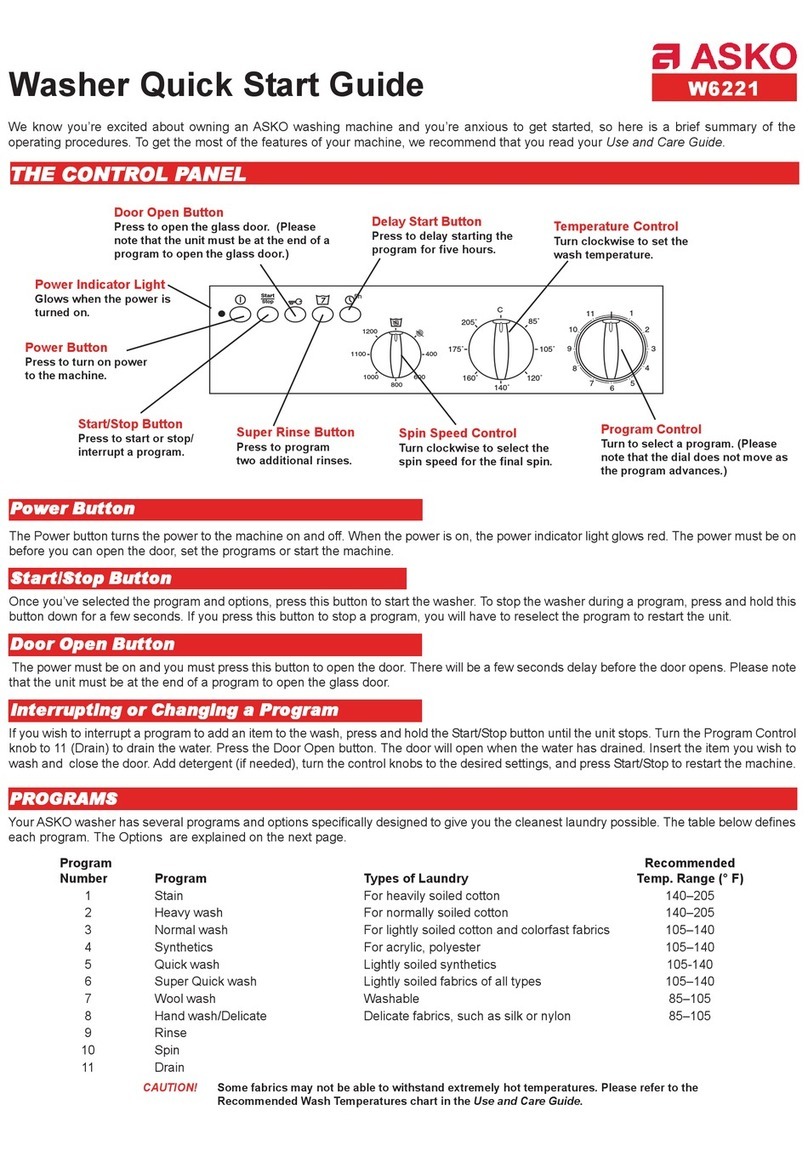9
Wool and silk
Wool and silk are sometimes marked machine
wash, and sometimes hand wash. The Wool and
Hand wash programs of the machine are at least
as gentle as washing by hand.
Wool is particularly sensitive to mechanical
processing. If you wish to avoid spin drying,
you can press out the water instead using terry
towelling. In this case, you should select
(No Spin/No Drain). Once the program is com-
plete, you should then run the Drain program.
Most garments will tolerate a short spin, ho-
wever. The Wool and Hand wash programs au-
tomatically include a short spin.
Man-made fibres and synthetic fibres
These materials require a lot of space if they are
not to crease. Fill the drum only to half load
when washing man-made/synthetic fibres. Se-
lect a short spin by selecting .
NOTE
Viscose and acetate are brittle when wet.
MINIMISE THE RISK OF ALLERGY
This washing machine offers a Super rinse op-
tion . You should use this if you have sensi-
tive skin, for example people with allergies and
infants.
SAVE TIME
Use the Light wash program to save time. This
program has a shorter main wash than Normal
wash, but it is often sufficient for normally soi-
led washing.
ECONOMY AND EFFICIENCY
Select Super quick wash if you simply need to
freshen up shirts or training kit, etc. You will
save both water and energy.
DETERGENTS
Overdosing detergent will not give better re-
sults, it only increases the burden on the envi-
ronment.
Try using less detergent, and increase the dose
only if you are displeased with the washing re-
sults.
FABRIC DYEING
If you want to dye fabrics in the machine, select
Normal wash and Super rinse, . Choose the
temperature recommended by the dye manu-
facturer.
If the fabrics to be dyed are cotton/polyester
mixtures, you should select (No spin/No
Drain). Once the program is complete, you can
run the Spin program by holding down the
button to spin the fabrics at low speed.
NOTE
Bleaches or stain removers that contain the che-
mical Na2S2O4, known as sodium dithionite or
sodium hyposulphite, must not be used in this
washing machine. If these substances are used
they could cause corrosion and discoloration.
NOTE
Put the dye directly in the drum - not in the
detergent compartment. After dyeing, the emp-
ty machine should be run using the same pro-
gram. Use a normal amount of detergent.

